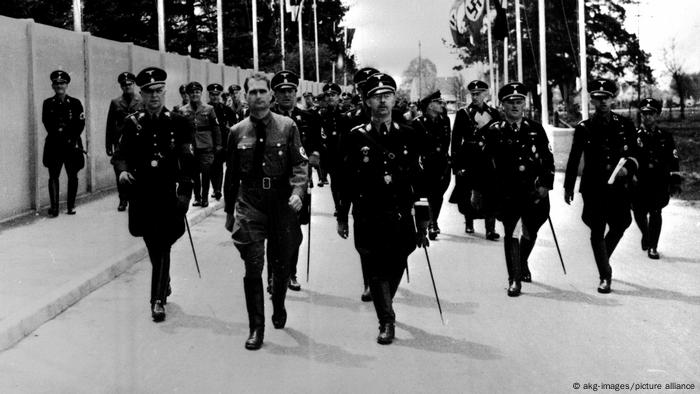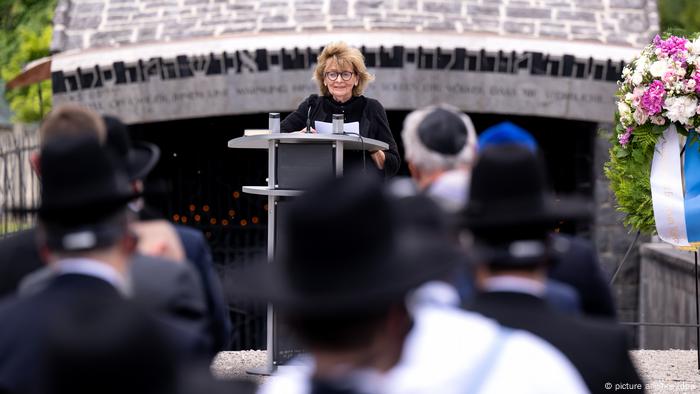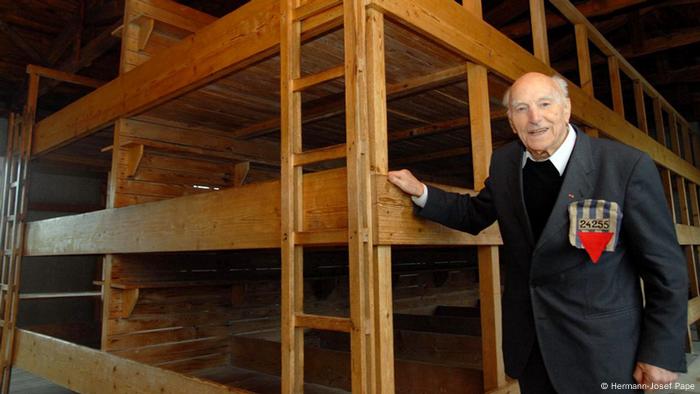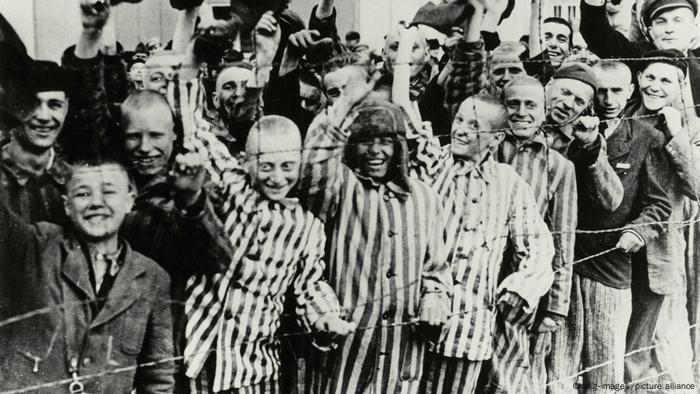90 years ago, the National Socialists set up the first concentration camp in Dachau near Munich – the beginning of a terror system. The memorial now serves as a reminder and is being expanded.

The cynical message “Work sets you free” was emblazoned at the entrance gate of the Dachau concentration camp
It was the prelude to the systematic extermination of people by the Nazis. The National Socialists set up the first concentration camp in Dachau, northwest of Munich, less than 20 kilometers from the center of the Bavarian state capital. On March 22, 1933, just two months after the seizure of power on January 30, the first 150 prisoners reached the camp.
“Dachau – the meaning of this name cannot be erased from German history”, said the Holocaust survivor Eugen Kogon (1903-1987), respected political scientist and publicist, later. “It stands for all concentration camps that the National Socialists set up in their sphere of influence.”

In 1936 the Reichsfuhrer SS, Heinrich Himmler (middle of the picture with cap), one of the planners of the horror, visited the Dachau concentration camp< /p>
In fact, Dachau was something of a model for other camps. The opening of a camp in Dachau had just been announced in Munich by a then little-known “acting police chief” by the name of Heinrich Himmler, who had been a member of the NSDAP since 1923. Three years later, he traveled to Dachau himself, meanwhile in the party office “Reichsfuhrer SS” and officially the “Chief of the German Police”, to inspect the camp. In Dachau, the historian Wolfgang Benz once said, “the camp regulations for all later concentration camps were invented”.
Motion and dehumanization
And as early as in Dachau, as in later concentration camps, the inmates encountered the slogan “Work sets you free” at the gate. It was a concrete expression of the mockery of the inmates, the oppression, the dehumanization. Camps: Dachau had 140 satellite camps In many places in the area, whether it was road construction or rubble removal, people could at some point encounter prisoners.

Charlotte Knobloch will speak at the memorial on June 1, 2022
Last June, Charlotte Knobloch, President of the Jewish community in Munich and herself a survivor of the Holocaust, described the camp to rabbis from numerous European countries as an “original place of terror by the National Socialists”. And for today's people it is a place that, like no other in Germany, is a reminder of the never-ending again. “Never again exclusion, never again disenfranchisement, never again murder. Never again dehumanization. And for the Jewish people too: never again be a victim.” ;
More than 41,000 fatalities
The National Socialists brought people who were a nuisance to them, who they didn't like, to the first concentration camp. Opponents of the Nazi regime, communists, committed Christians, Jews, Sinti and Roma, Jehovah's Witnesses, homosexuals. In the twelve years before the camp was liberated by the US Army on April 29, 1945, a total of over 200,000 people from all over Europe were imprisoned here, or to put it more clearly: crammed together in a very small space. By the end of the war, more than 32,000 people had died; more recent research assumes more than 41,000 fatalities. Around a quarter of all prisoners were people of the Jewish faith. At least 11,250 of them did not survive imprisonment.

One of the priests in the “pastoral block” was Hermann Scheipers (1913-2016), who continued to visit the memorial even in old age.
A special feature in Dachau was the so-called priests' block. In 1940, the National Socialists brought together clergymen of various denominations and from 20 countries from other camps in the German Reich, the vast majority of whom were Catholic priests, many of whom came from Poland. A total of around 3000 clergymen suffered here. When typhus broke out in the camp at the beginning of 1945, priests volunteered to look after the sick – and lost their lives in the process. For weeks after it was liberated by US soldiers, the camp remained sealed off and was under strict quarantine because of the epidemic. More than 10,000 people, weakened by the deprivation and harassment of the camp years, succumbed to the disease, including several hundred Catholic priests.

Prisoners at the liberation of Dachau by US soldiers in 1945
The imprisoned clergy included Martin Niemöller (1892-1984), the evangelical theologian who was a prominent anti-Nazi, and the Dutch Carmelite Titus Brandsma (1881-1942), who died in the camp's infirmary after performing medical experiments and was incarcerated in the Catholic Church has been venerated as a saint since 2022. Several prisoners who survived later became bishops.
One of the last survivors was the Münster priest Hermann Scheipers (1913-2016), ordained in 1937, who came to the concentration camp as an “enemy of the state” and was in the camp for more than four years from 1941 to 1945. Still very old, at over 90, Scheipers went to school classes and events to report on that time. “I had to tell later generations what it was like in Dachau,” he once said.
Expansion of the memorial
The extensive memorial, built in 1965, is visited by around a million people from all over the world every year. Only a few buildings from the camp period have survived. During the visit of the European rabbis last summer, the Bavarian Minister of the Interior, Joachim Herrmann, announced that the memorial would be expanded. In addition, buildings that are currently used for other purposes and would have belonged to the Dachau concentration camp would be cleared “because the demand and the number of visitors have also increased significantly”. This expansion should be completed by 2025 at the latest. However, the financing of this work is currently not secured.
For 90-year-old Charlotte Knobloch, it remains the place where “barbarism in the name of Germany” began. She insists on living memories not only to give the victims their dignity back. Dachau is also a constant reminder that “extremism from the left and right endangers religion, coexistence, freedom. It threatens everything we have built .” Those who spoke out against barbarism in today's Germany and who “promote it by force, we must stop in time”.

The bronze sculpture “People in barbed wire” stands on the former roll call area of the concentration camp
The fact that such a memorial is not immune to new violence was shown in 2014. At that time, unknown persons stole in one November night the wrought-iron gate of the memorial with the inscription “Work sets you free”. Two years later it turned up in Norway and was brought back in 2017. The circumstances of the theft were ultimately never clarified.